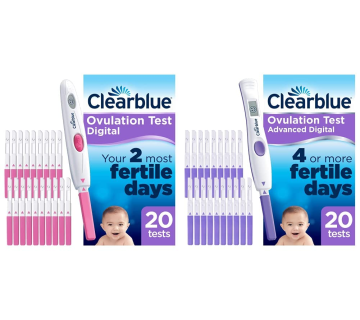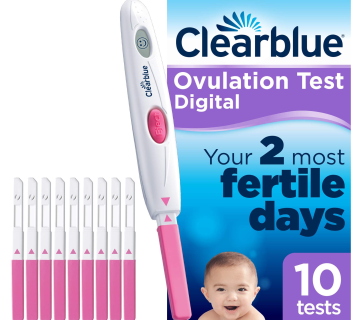
Can You Use an Ovulation Kit as a Pregnancy Test? The Truth Unveiled
When you’re trying to figure out what’s happening with your body—whether you’re hoping to conceive or suspect you might already be pregnant—it’s tempting to grab whatever tools you have on hand. Ovulation kits and pregnancy tests are two of the most common at-home options, and they look pretty similar, right? Both involve peeing on a stick and waiting for lines to appear. So, it’s no surprise that a question pops up a lot: Can you use an ovulation kit as a pregnancy test? The short answer is no, they’re not interchangeable—but there’s more to the story than that. Let’s dive into the details, bust some myths, and explore how these tests work, why people mix them up, and what you can do instead if you’re in a pinch.
How Ovulation Kits and Pregnancy Tests Actually Work
Ovulation kits and pregnancy tests might seem like cousins, but they’re designed to detect totally different things in your body. Understanding the science behind them can clear up a lot of confusion.
Ovulation kits, often called ovulation predictor kits (OPKs), are all about timing. They detect a hormone called luteinizing hormone (LH) in your urine. LH spikes 24 to 36 hours before your ovary releases an egg—a key moment if you’re trying to get pregnant. When you see two bold lines on an OPK (or a smiley face on digital versions), it’s your signal that ovulation is near. Time to get busy if you’re hoping for a baby!
Pregnancy tests, on the other hand, are looking for human chorionic gonadotropin (hCG). This hormone shows up after a fertilized egg implants in your uterus, usually about 6 to 12 days after ovulation. It’s the “pregnancy hormone,” and its levels double every couple of days in early pregnancy. A positive pregnancy test means hCG is present—congrats, you might be expecting!
So, at their core, these tests are hunting for different hormones. But here’s where the confusion creeps in: both LH and hCG are structurally similar. They belong to the same hormone family, and in rare cases, an ovulation kit might pick up hCG. Does that mean it can double as a pregnancy test? Not reliably—let’s unpack why.
Why People Think Ovulation Kits Can Detect Pregnancy
You’ve probably heard stories online—someone used an ovulation kit, got a positive result, and later found out they were pregnant. It’s not just random chatter; there’s a bit of science behind why this mix-up happens.
LH and hCG share some similarities in their molecular makeup. Both have an “alpha” and “beta” subunit, and their beta parts are especially close. Because of this overlap, an ovulation kit might react to high levels of hCG in your urine, giving you a positive result even if you’re not ovulating. This is more likely in early pregnancy when hCG levels are climbing fast.
Social media is full of posts where women show off positive OPKs alongside positive pregnancy tests, claiming it worked for them. Trending discussions on platforms like X recently highlight this buzz—people are curious about “using ovulation kits to confirm pregnancy early” or “ovulation test hacks.” But here’s the catch: just because it can happen doesn’t mean it’s a good idea. Ovulation kits aren’t designed or calibrated to detect hCG accurately, so relying on them is a gamble.
The Risks of Using an Ovulation Kit as a Pregnancy Test
Tempted to test this theory out? Before you do, consider what could go wrong. Using an ovulation kit to check for pregnancy comes with some big pitfalls.
First, there’s the accuracy problem. Ovulation kits are tuned to spot an LH surge, which varies from person to person (typically 20-100 mIU/mL during ovulation). Pregnancy tests, meanwhile, are sensitive to hCG levels as low as 10-25 mIU/mL, depending on the brand. If your hCG is still low in early pregnancy, an OPK might not pick it up, leaving you with a false negative—and a lot of unnecessary worry.
Second, false positives are a real risk. Some women naturally have higher baseline LH levels due to conditions like polycystic ovary syndrome (PCOS). For them, an OPK could show a positive result even when they’re not pregnant or ovulating. Talk about a rollercoaster of emotions!
Finally, timing matters. If you’re testing too early—say, a few days after ovulation—an OPK might catch a lingering LH spike and trick you into thinking it’s hCG. Without a pregnancy test to confirm, you’re left guessing. The bottom line? Ovulation kits aren’t a reliable substitute. They might give you a hint in some cases, but it’s not a sure thing.
What Science Says About This Mix-Up
Let’s bring in some research to settle the debate. Studies show that LH and hCG do cross-react in lab settings, but real-world use is messier. A 2018 review in the Journal of Clinical Endocrinology & Metabolism noted that while ovulation kits can sometimes detect hCG, their sensitivity and specificity for pregnancy are way lower than actual pregnancy tests. In one small study, only 30% of pregnant women got a positive OPK when hCG levels were below 50 mIU/mL—hardly a winning stat.
More recently, a 2023 study from the American Journal of Obstetrics and Gynecology looked at women using connected ovulation test systems (fancy OPKs that sync with apps). They found that about 15% of participants saw unexpected positive results outside their ovulation window, some of which lined up with early pregnancy. But the researchers stressed that these tools aren’t validated for pregnancy detection—too many variables mess with the outcome.
So, science backs up the caution: ovulation kits can pick up hCG sometimes, but they’re not built for the job. Stick to the right tool for the right task.
Interactive Quiz: Which Test Should You Use?
Not sure which test fits your situation? Take this quick quiz to find out! Answer yes or no, and tally your points.
- Are you trying to figure out the best days to conceive? (Yes = 1, No = 0)
- Do you suspect you might already be pregnant? (Yes = 2, No = 0)
- Have you missed your period? (Yes = 2, No = 0)
- Are you tracking your cycle to avoid pregnancy? (Yes = 1, No = 0)
Results:
- 0-1 points: Grab an ovulation kit to pinpoint your fertile days.
- 2+ points: Time for a pregnancy test to check for hCG.
This little game can help you decide without overthinking it. Plus, it’s more fun than staring at a pee stick, right?
What to Do If You’re Out of Pregnancy Tests
So, you’re dying to know if you’re pregnant, but you don’t have a pregnancy test handy. Can an ovulation kit save the day? Here’s a practical game plan instead of rolling the dice.
✔️ Use What You Have Wisely: If you’ve got an OPK and get a positive result after your ovulation window, it could hint at pregnancy. But don’t celebrate (or panic) yet—get a pregnancy test ASAP to confirm.
✔️ Check Your Symptoms: Early pregnancy signs like nausea, sore breasts, or fatigue might give you a clue while you wait. OPKs won’t tell you about those!
✔️ Order Online: Stores might be closed, but same-day delivery from Amazon or a pharmacy app can get you a pregnancy test fast.
❌ Don’t Rely Solely on an OPK: It’s a tease, not a promise. False hope or confusion isn’t worth it.
One woman I heard about used an OPK when she ran out of pregnancy tests at 10 days post-ovulation. She got a faint positive, got excited, and then a pregnancy test the next day was negative. Turns out, it was just leftover LH. Lesson learned: backup plans beat guesswork.
A Deeper Dive: Hormonal Overlaps and What They Mean
Let’s get nerdy for a sec—why do LH and hCG overlap in the first place? These hormones are part of the glycoprotein family, which means they’re built from similar protein blocks. Evolutionarily, they’re like distant relatives with different jobs: LH triggers egg release, while hCG supports a growing embryo. Their shared structure is why an OPK might light up for hCG, but it’s not a perfect match.
Here’s a cool fact most articles skip: hCG actually mimics LH in early pregnancy to keep your ovaries producing progesterone, which protects the pregnancy. That’s why hCG levels skyrocket while LH drops off. An OPK might catch this shift, but it’s not sensitive enough to tell the full story. Think of it like using a metal detector to find gold—it might beep, but it won’t tell you if it’s fool’s gold or the real deal.
Comparing Sensitivity: Ovulation Kits vs. Pregnancy Tests
To really see why these tests aren’t interchangeable, let’s break it down with a simple table:
| Feature | Ovulation Kit (OPK) | Pregnancy Test |
|---|---|---|
| Detects | LH (luteinizing hormone) | hCG (human chorionic gonadotropin) |
| Sensitivity | 20-40 mIU/mL (varies by brand) | 10-25 mIU/mL (varies by brand) |
| Purpose | Predicts ovulation | Confirms pregnancy |
| Best Time to Test | Mid-cycle (days 10-16) | After missed period |
| False Positive Risk | High (PCOS, meds, etc.) | Low (rare conditions) |
See the difference? Pregnancy tests are fine-tuned for hCG and catch it earlier and more reliably. OPKs are broader, less picky, and prone to mix-ups.
Step-by-Step: How to Use an Ovulation Kit (The Right Way)
Since we’re on the topic, let’s make sure you’re using an OPK correctly for its actual purpose—finding your fertile days. Here’s a no-fuss guide:
- Know Your Cycle: Count the days from the start of your period (day 1). Most women ovulate around day 14 in a 28-day cycle, so start testing on day 10 or 11.
- Pick a Time: Test in the afternoon (2-4 p.m.) when LH is strongest. Avoid first morning urine—it’s too concentrated.
- Pee and Wait: Dip the strip or pee on the stick, then wait 5-10 minutes (check the box for exact timing).
- Read the Lines: Two dark lines mean an LH surge—ovulation’s coming in 24-36 hours. One line or a faint second line? Keep testing daily.
- Act Fast: Have sex within the next day or two to maximize your chances.
Pro tip: Track your results in a notebook or app. Patterns emerge over months, making it easier to predict next time.
The Emotional Side: Hope, Confusion, and Clarity
Here’s something you won’t find in most articles: the emotional stakes of testing. When you’re desperate for answers—whether it’s “When can I conceive?” or “Am I pregnant?”—every test feels like a lifeline. Using an ovulation kit as a pregnancy test might seem like a shortcut, but it can mess with your head. A surprise positive might spark joy, only to crash when a pregnancy test says otherwise. Or a negative might crush your hopes when you’re actually pregnant, just too early to detect.
I talked to a friend who tried this trick. She got a positive OPK at 12 days post-ovulation and spent two days dreaming of baby names—until a pregnancy test showed negative. She felt silly afterward but said the uncertainty was the worst part. Moral of the story? Stick to the right test to save your sanity.
New Trends: Tech-Savvy Testing Options
Testing’s getting a glow-up in 2025! Beyond basic strips, there are now connected ovulation kits that sync with your phone (think Clearblue Connected or Inito). These gadgets measure LH and sometimes estrogen, giving you a fuller picture of your fertile window. Some even claim to spot pregnancy early by tracking hormone shifts—but they’re still not replacements for hCG tests.
On X, people are buzzing about “smart fertility trackers” and “hormone monitoring at home.” A recent study from Fertility and Sterility (2024) found that app-connected OPKs increased conception rates by 20% over two cycles compared to no testing. Cool, right? But for pregnancy confirmation, these tools still defer to traditional tests. Tech can help, but it’s not rewriting the rules yet.
Poll: What’s Your Testing Style?
Let’s get interactive! How do you approach fertility and pregnancy testing? Vote below and see where you fit:
- A) I stick to ovulation kits for timing and pregnancy tests for confirmation.
- B) I’ve tried using an OPK as a pregnancy test—worked for me!
- C) I’m all about the latest tech—give me an app-connected kit.
- D) I just wing it and hope for the best.
Drop your choice in your head (or share it with a friend), and think about how your habits match up with the science we’ve covered.
Three Things Most Articles Miss
Most blogs stop at “don’t do it” and call it a day. But there’s more to explore—here are three angles that don’t get enough love:
1. The PCOS Factor
If you have PCOS, ovulation kits are tricky even for their intended use. High LH levels are common with this condition, so a positive OPK might mean nothing—or it could pick up hCG by accident. One study in Human Reproduction (2022) found that 40% of women with PCOS got misleading OPK results. If this is you, talk to a doctor about blood tests or ultrasound for clarity.
2. Testing Too Early
A lot of women test with OPKs right after ovulation, hoping to catch pregnancy fast. But hCG doesn’t spike until implantation—usually 6-12 days later. Testing too soon with an OPK might just confuse you with leftover LH. Wait until at least 10 days post-ovulation and use a pregnancy test for the real scoop.
3. The Cost of Guessing
Ovulation kits aren’t cheap—$20-$50 for a pack of 5-10 strips. Using them as pregnancy tests wastes money when a $5 pregnancy test does the job better. Over a year, that adds up! One quick calc: testing daily with OPKs for a week post-ovulation could cost $15-$20 per cycle, while a single pregnancy test is a fraction of that.
Real-Life Stories: Learning from Others
Sometimes, hearing how others navigated this helps. Take Sarah, a 29-year-old from Seattle. She’d been tracking ovulation for months with OPKs. One cycle, she got a positive 14 days after ovulation—way past her fertile window. She thought, “Pregnancy?” A drugstore pregnancy test confirmed it. Lucky break, but she admits she wouldn’t trust OPKs again—too much stress.
Then there’s Mia, 34, from Austin. With irregular cycles and PCOS, her OPKs were always positive. She tried using them to check for pregnancy and got burned—false positives galore. A blood test from her doctor finally sorted it out. Her advice? “Don’t DIY it if your hormones are wild.”
Your Action Plan: Testing Smart
Ready to take control without the guesswork? Here’s how to test like a pro, whether you’re trying to conceive or checking for a plus sign:
✔️ For Ovulation: Use OPKs mid-cycle to nail your fertile days. Pair them with cycle tracking for extra accuracy.
✔️ For Pregnancy: Wait until your period’s late (or 12-14 days post-ovulation), then use a pregnancy test. Early-detection brands work even sooner.
✔️ Stock Up: Keep both tests on hand—OPKs for timing, pregnancy tests for confirmation. No need to double-duty one tool.
❌ Avoid Shortcuts: Skip the OPK-as-pregnancy-test experiment. It’s not worth the confusion or cost.
If you’re still curious, try this: next cycle, use an OPK and a pregnancy test side-by-side after ovulation. Compare the results yourself (just don’t bet on the OPK!).
Wrapping It Up: Knowledge Is Power
Ovulation kits and pregnancy tests are awesome tools—when you use them right. They’re not interchangeable, no matter how tempting it is to repurpose that extra OPK. The science, the risks, and real stories all point to one thing: stick to the test that matches your goal. Want to know when to try for a baby? Ovulation kit’s your friend. Wondering if you’re already on the way? Pregnancy test’s the answer.
Next time you’re staring at those sticks, you’ll know exactly what to do—no second-guessing required. And hey, if you’ve got a wild testing tale or a trick that worked for you, share it with a friend. The more we talk about this stuff, the less mysterious it all feels.


